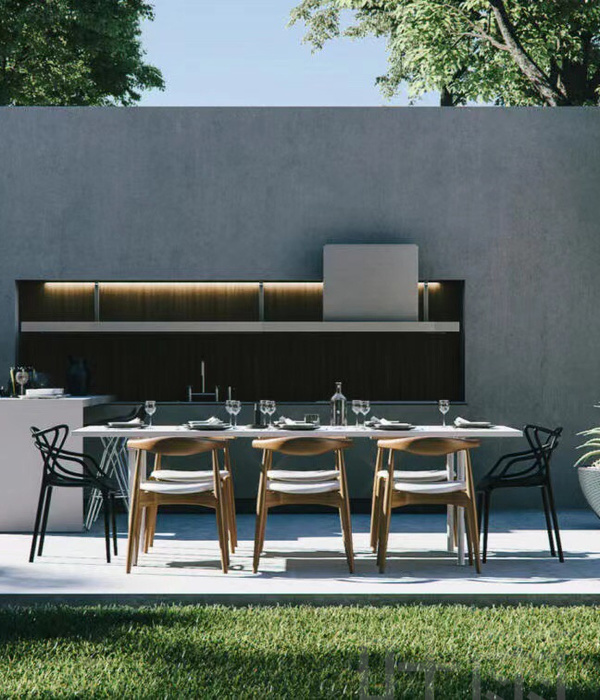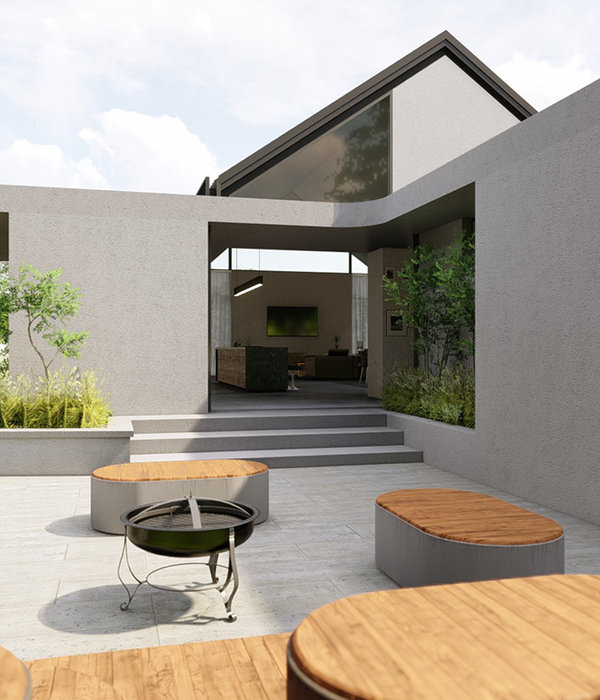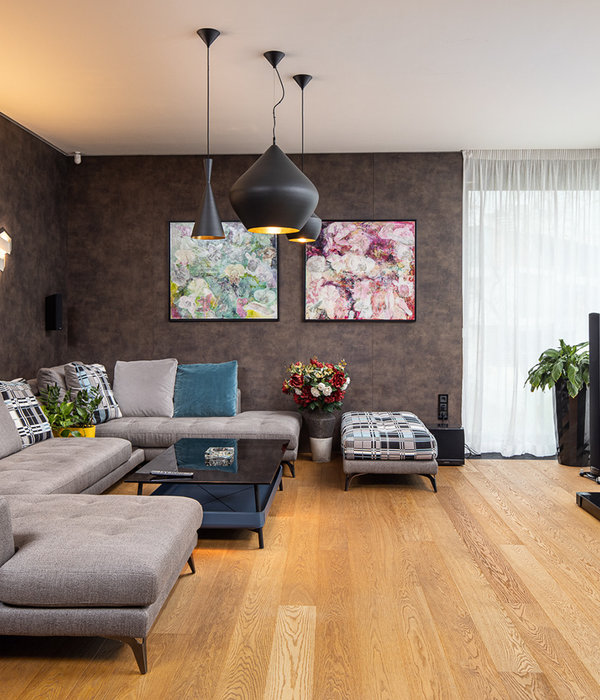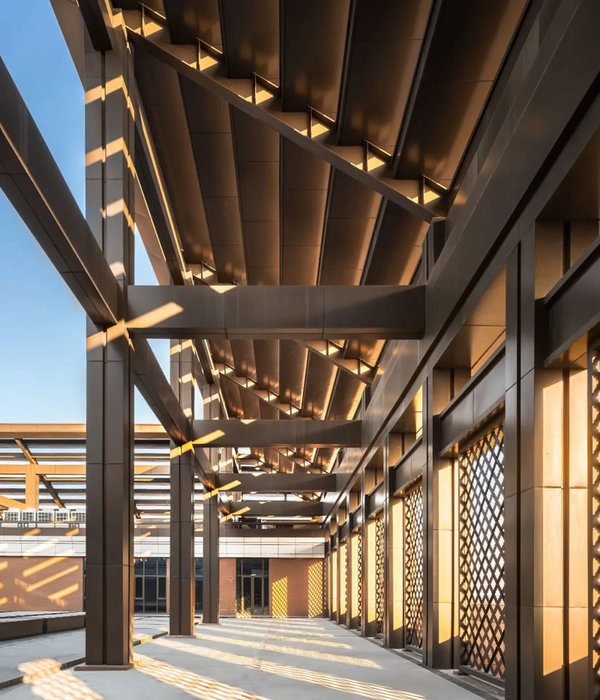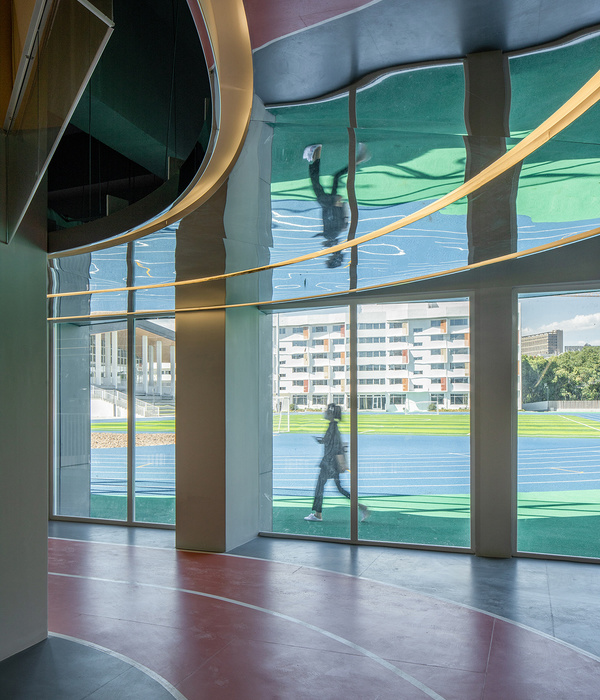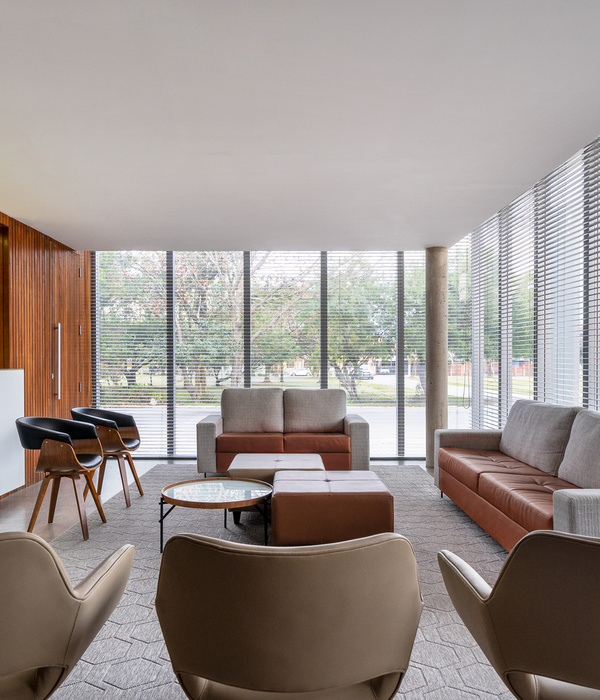The Jalmanjar farmhouse sits at the periphery of a 12.5 acre farm on the outskirts of
. The gable end of the jali wall is the first sight as one approaches the home through the tree canopied internal road of Jalmanjar. This perforated envelope of Compressed Earth blocks sheathes the house from the direct sun while allowing the wind to breeze through the windcatchers inside.
To be able to tackle the climate of the region was pivotal in the design and planning of spaces since the first sketch. All major decisions are based on the efficiency of the climatic performance of the house. The position and size of the openings, orientation and volume of spaces, choice of materials, outer layer of the jali and the windcatchers, all work in synergy to create simple but energy efficient spaces. Conceptually, two similar rectangular volumes - the living and dining, sit on either side of an open to sky courtyard and are connected by a passage and circulation core. These volumes are taken up to house two bedrooms and their respective bathrooms. Apart from the main functions of the house, the spaces derived between the layer of the jali wall are crafted into semi open verandahs, balconies, landscape niches, service corridors and an open to sky shower.
The home features 9 inch thick load bearing walls made out of compressed stabilized earth blocks coupled with a hybrid steel and concrete structure. Using CSEB for the walls allowed the spaces to harness the thermal properties of the earth and keep the interior temperatures cool. The roof, supported on a steel structure sits higher than conventional height which increases the volumes of the bedrooms allowing comfortable temperature at all times. One of the intentions behind a G+1 structure on a 12.5 acre land was for the built form to cover as little footprint as possible and let the main focus of the land be the farm hence designing a ‘farm’ house in its truest sense. The expansive north windows in the living and the kitchen are planned to open up completely, diminishing the boundaries between the house and the farm.
{{item.text_origin}}


